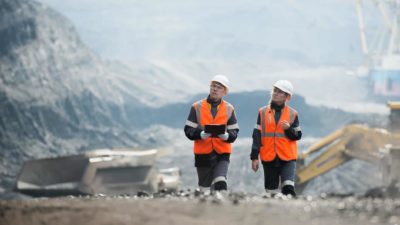June was a bit of a topsy turvy month for BHP Group Ltd (ASX: BHP) shares. Increasing expectations that iron ore prices might have peaked, as well as efforts from China to cap surging commodity prices, may have been dragging on the BHP share price, which hit a 2-month low of $45.61 by 21 June.
Pleasingly, however, shares in the iron ore major managed to rally back up to $48.57 by month-end, finishing with a 1.5% increase for June overall.
Let's take a closer look at why the BHP share price was up and down last month.
Experts forecast lower iron ore prices
Last month, the Australian Financial Review highlighted five key events that could lead to lower iron ore prices.
This included Brazil moving back to full production, easing Chinese stimulus measures, iron ore miners ramping up production, new players entering the market and China shifting consumption to scrap steel.
Even the Australian Government's commodity forecaster, the Office of the Chief Economist (OCE), expects prices to ease in the medium term. In its latest Resource and Energy Quarterly, it said:
[Iron ore] prices are forecast to average around US$150 a tonne in 2021, before falling to below US$100 a tonne by the end of 2022, as Brazilian supply recovers and Chinese steel production softens.
China clamps down on commodity prices
According to the OCE, Australia's resource and energy exports are estimated to hit a record $310 billion in 2020-21, with almost half of those earnings derived from iron ore.
While this might sound like positive news for the BHP share price, China isn't all that happy about having to pay sky high prices.
On 18 June, Yuan Talks said that China's top economic planner would release state reserves of copper, aluminium and zinc to downstream processing and manufacturing companies to curb soaring prices.
Chinese authorities made another move on June 21, saying they would closely monitor iron ore prices and punish any form of malicious speculation. This was also the day when the BHP share price slipped 1.91% to its 2-month low of $45.61.
Iron ore prices still holding strong
Despite what some experts say could happen, iron ore prices remain at elevated levels, currently fetching around US$214 per tonne.
Pleasingly, imported iron ore stockpiles at Chinese ports fell for a fourth straight week to 123.95 million tonnes last Friday, according to Mining.com. This represents the "lowest level since early October [2020]".
Mining.com also reported that "subdued prices in the next six months may be expected as a result of active government intervention, but [iron ore] may test $250/mt when Chinese buyers look to replenish depleted stockpiles".
Where does the BHP share price go from here?
Goldman Sachs is bullish on BHP shares, with a buy rating and $53.80 price target.
The broker highlighted positive factors including the miner's strong cash flow position, solid production prospects and ongoing mining portfolio optimisation.
At Thursday's market close, the BHP share price was trading 0.72% lower at $$48.22.





